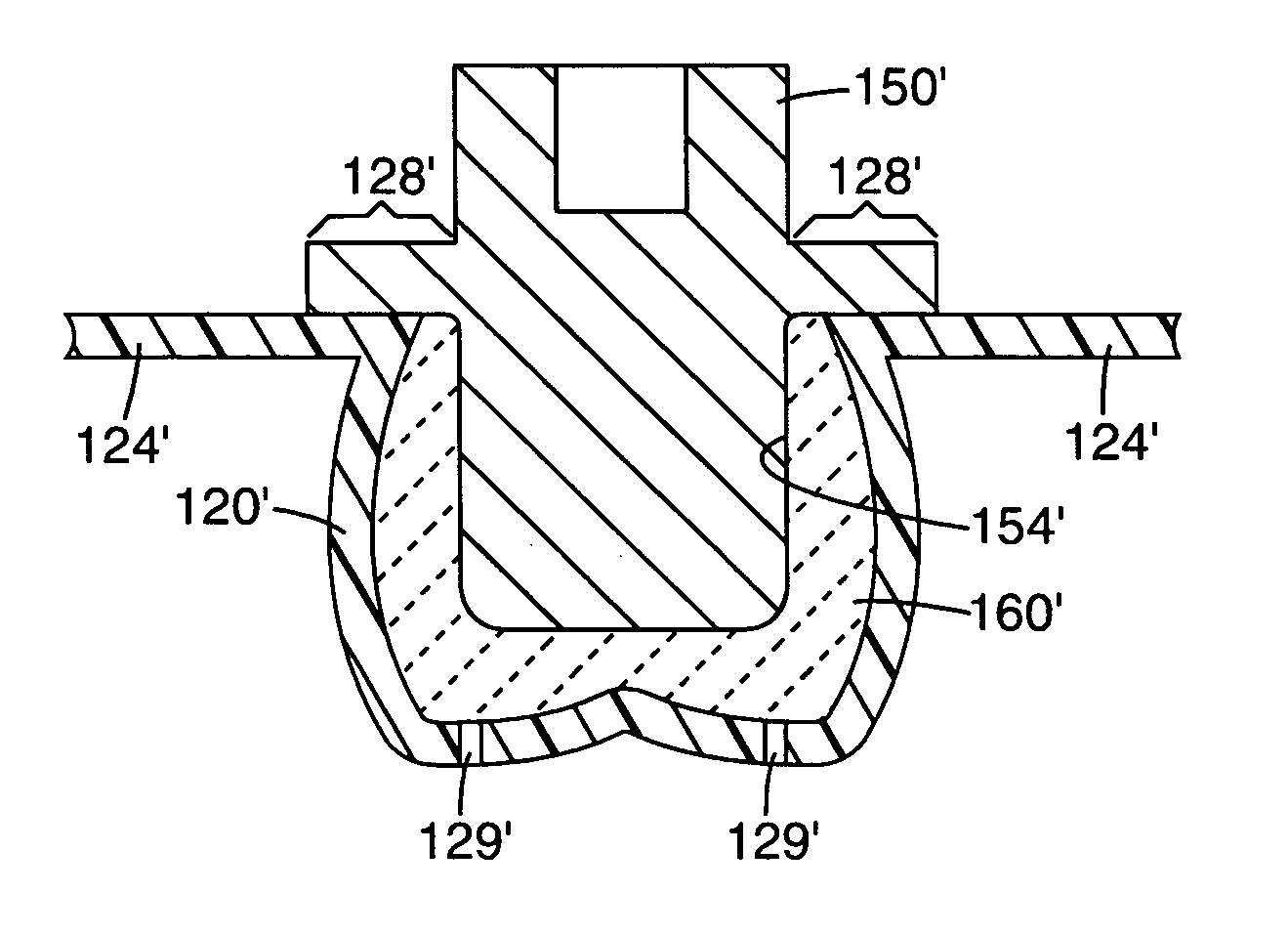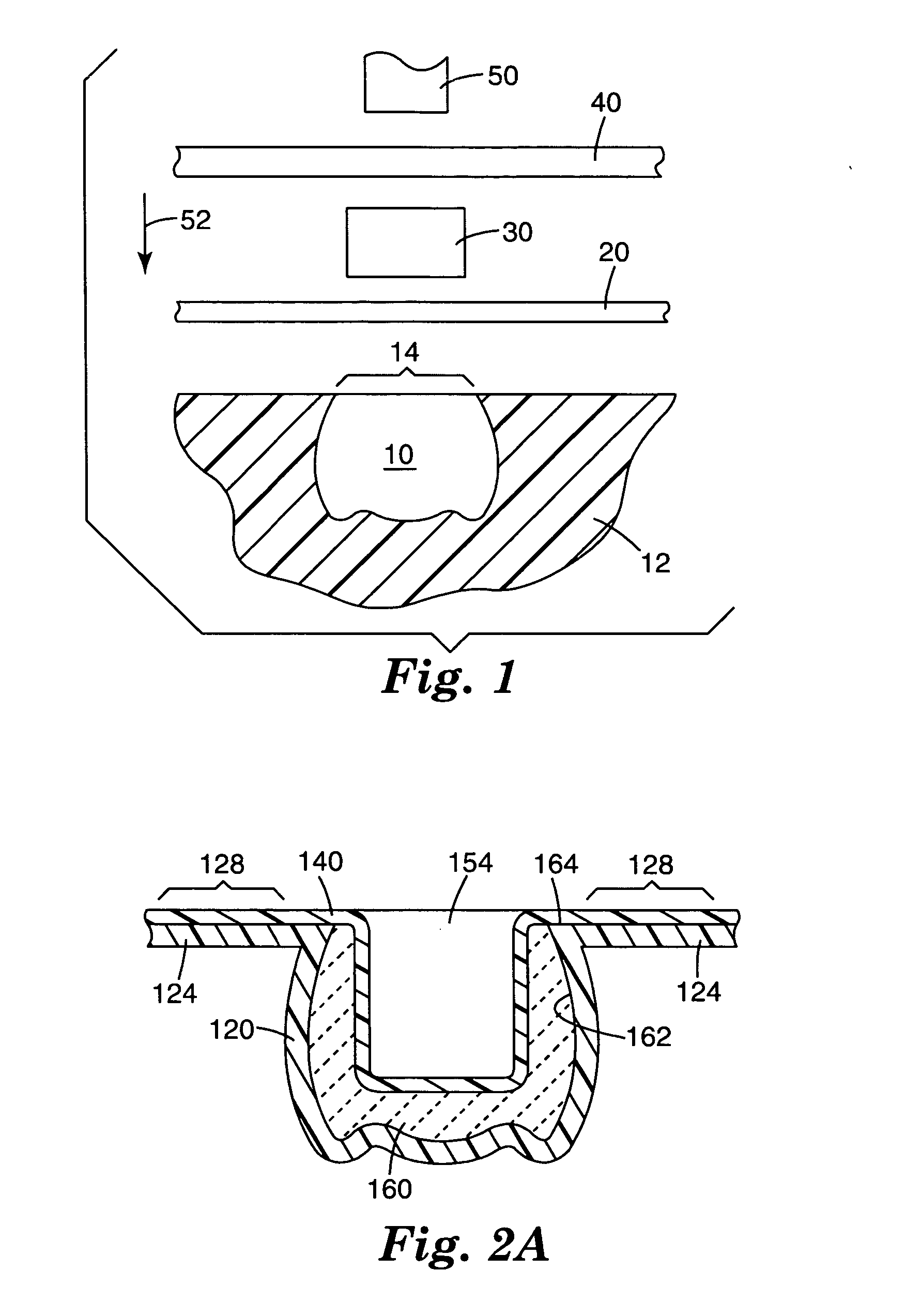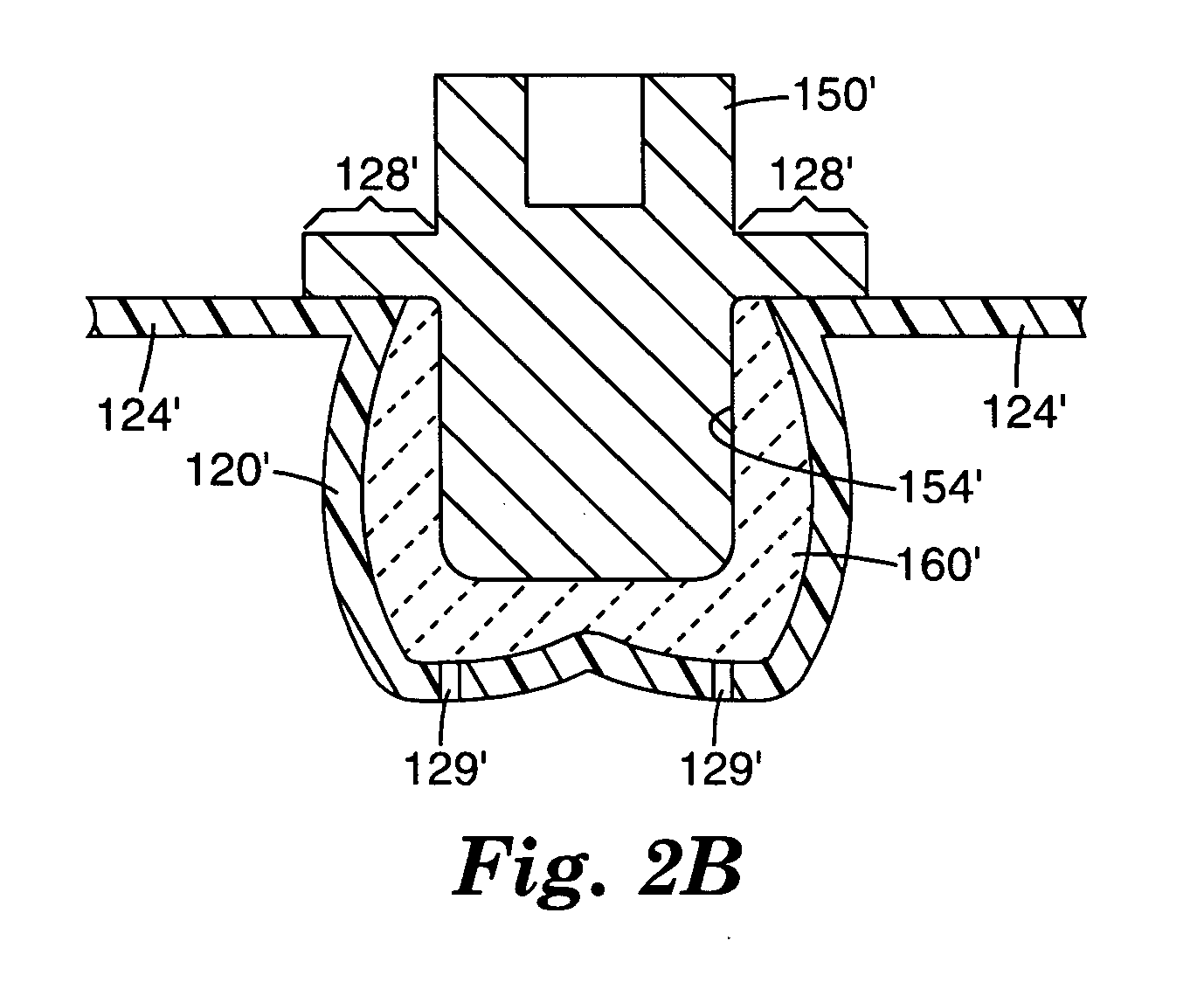Hardenable dental article and method of manufacturing the same
a dental article and manufacturing method technology, applied in the field of dental articles and manufacturing methods, can solve the problems of dental article use may have a less than desirable fit and/or appearance, and the need for multiple visits to the dentist,
- Summary
- Abstract
- Description
- Claims
- Application Information
AI Technical Summary
Benefits of technology
Problems solved by technology
Method used
Image
Examples
Embodiment Construction
[0043] In the following detailed description of illustrative embodiments, reference is made to the accompanying figures of the drawing, which form a part hereof, and in which are shown, by way of illustration, specific embodiments in which the invention may be practiced. It is to be understood that other embodiments may be utilized and structural changes may be made without departing from the scope of the present invention.
[0044]FIG. 1 is an exploded diagram illustrating one process of forming a hardenable dental article according to the present invention. The illustrated process includes a mold cavity 10 formed in a body 12. The mold cavity 10 includes an opening 14 leading to the volume of the mold cavity itself, which is depicted in cross-section in FIG. 1. In the depicted embodiment, the mold cavity 10 is in the shape of a dental crown. It should, however, be understood that the hardenable dental articles of the present invention may include a wide variety of articles as discus...
PUM
| Property | Measurement | Unit |
|---|---|---|
| temperature | aaaaa | aaaaa |
| temperature | aaaaa | aaaaa |
| shape | aaaaa | aaaaa |
Abstract
Description
Claims
Application Information
 Login to View More
Login to View More - R&D
- Intellectual Property
- Life Sciences
- Materials
- Tech Scout
- Unparalleled Data Quality
- Higher Quality Content
- 60% Fewer Hallucinations
Browse by: Latest US Patents, China's latest patents, Technical Efficacy Thesaurus, Application Domain, Technology Topic, Popular Technical Reports.
© 2025 PatSnap. All rights reserved.Legal|Privacy policy|Modern Slavery Act Transparency Statement|Sitemap|About US| Contact US: help@patsnap.com



